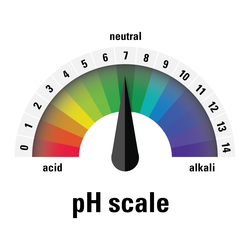Protable electronic pH meter

Detailed Description
The U.S. Geological Survey analyzes hundreds of thousands of water samples every year. Many measurements are made right at the field site, and many more are made on water samples back at the lab. pH is an important water measurement, which is often measured both at the sampling site and in the lab. There are large and small models of pH meters. Portable models are available to take out in the field and larger models, such as this one, are used in the lab.
To use this pH meter, the water sample is placed in the cup and the glass probe at the end of the retractable arm is placed in the water. Inside the thin glass bulb at the end of the probe there are two electrodes that measure voltage. One electrode is contained in a liquid that has a fixed acidity, or pH. The other electrode responds to the acidity of the water sample. A voltmeter in the probe measures the difference between the voltages of the two electrodes. The meter then translates the voltage difference into pH and displays it on the little screen on the main box.
Before taking a pH measurement, the meter must be "calibrated." The probe is immersed in a solution that has a known pH, such as pure water with a neutral pH of 7.0. The knobs on the box are used to adjust the displayed pH value to the known pH of the solution, thus calibrating the meter.
Sources/Usage
Public Domain.


